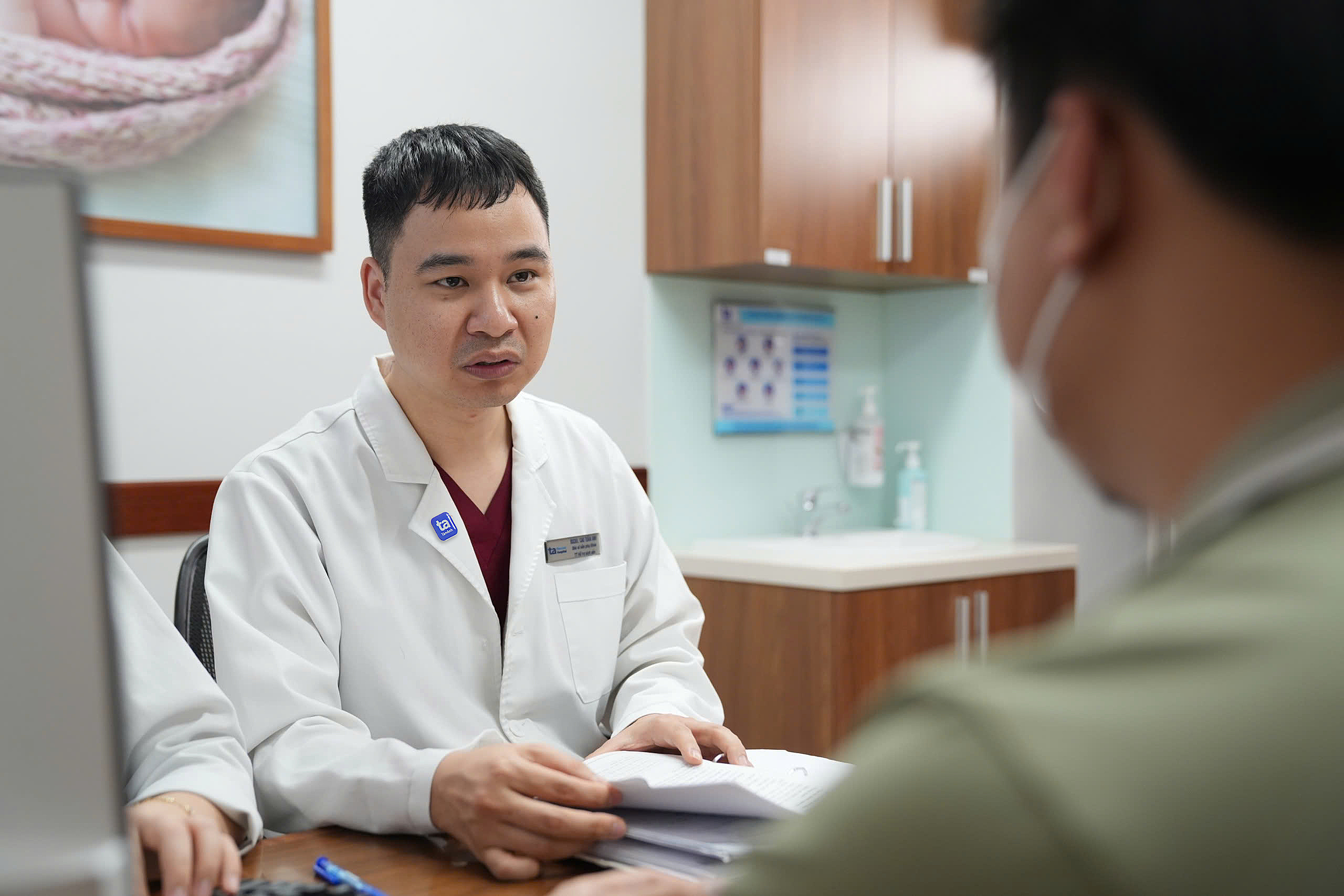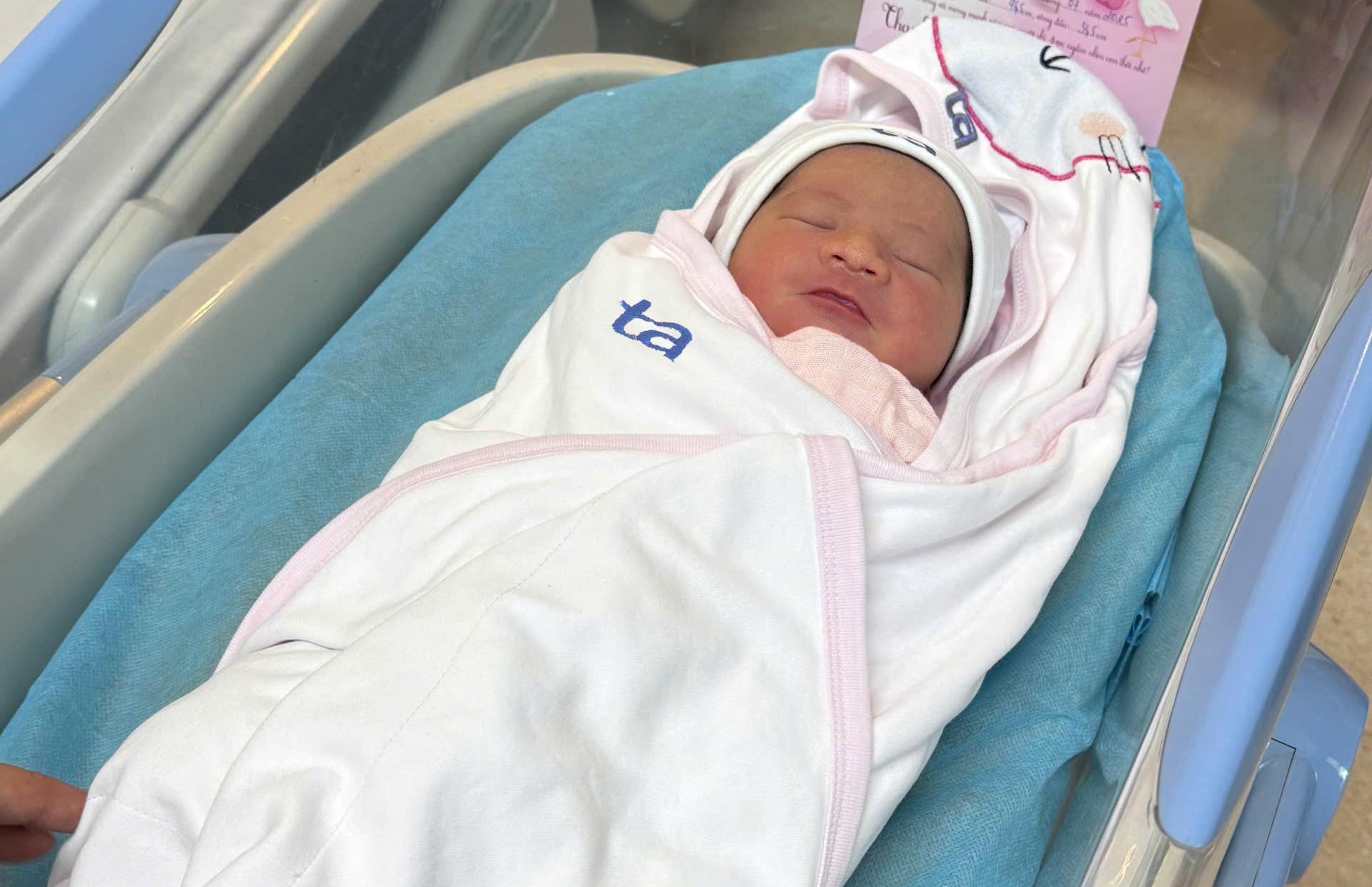In 2016, Hung contracted mumps, which led to bilateral orchitis (inflammation of both testicles). Before marrying his girlfriend, he sought treatment at the Center for Reproductive Support, Tam Anh General Hospital in Hanoi (IVF Tam Anh). Semen analysis revealed no sperm, and both testicles had atrophied to 1/6 of their normal size. Doctor Cao Tuan Anh diagnosed Hung with non-obstructive azoospermia due to testicular atrophy, a common complication of mumps in men.
Doctor Tuan Anh explained that the mumps virus can attack the testicles, causing irreversible damage to germ cells. In severe cases, sperm-producing cells are destroyed, leading to testicular fibrosis and atrophy, which in turn reduces sperm count, morphology, and motility.
"Despite the difficulty in treatment, patients still have a chance to become fathers because sperm production may still occur in a small area of the testicle," Doctor Tuan said, adding that micro-TESE (microdissection testicular sperm extraction) is the most effective treatment.
Compared to conventional TESE, micro-TESE has a higher sperm retrieval rate, about 60% in azoospermia cases in general and nearly 100% in cases caused by mumps complications. The amount of tissue extracted is only 1/10 of that in conventional TESE, reducing testicular damage and minimizing post-operative complications such as bleeding, infection, trauma, or impairment of male function and hormones. Sperm obtained through micro-TESE yields IVF results nearly equivalent to those using sperm from semen samples.
 |
Doctor Tuan Anh consulting a patient. *Illustrative photo provided by the hospital* |
After a month of hormone therapy, Hung underwent sperm retrieval surgery. The doctor used a microscope with 30x magnification to locate potentially active seminiferous tubules, and then transferred the sample to the lab. There, embryologists using an inverted microscope with over 200x magnification extracted enough sperm to freeze two vials using vitrification.
With this "reserve," Hung and his girlfriend got married. Six months later, the couple returned to pursue IVF.
Thu, 23, experienced premature ovarian insufficiency. Doctors stimulated her ovaries and implemented a multi-cycle embryo collection protocol to increase the chances of pregnancy. Embryologists thawed Hung's sperm in a specialized solution, then washed and selected the healthiest sperm for intracytoplasmic sperm injection (ICSI). Two cycles of cultivation resulted in one day-3 embryo and seven day-5 embryos. Thu became pregnant on the second embryo transfer and gave birth to a baby girl weighing 2.8 kg last month.
 |
Hung and Thu's daughter shortly after birth. *Photo: Phuong Hanh* |
According to Doctor Tuan Anh, about 20-25% of men who contract mumps after puberty experience orchitis-epididymitis, and about half develop testicular atrophy. Orchitis caused by mumps typically develops 5-10 days, sometimes 1-2 weeks, after the parotid gland swelling. Patients should seek medical attention promptly for proper evaluation and treatment.
The disease usually affects only one testicle. Bilateral atrophy, as in Hung's case, occurs in about 10-30% of patients, causing reduced sexual function, decreased libido, erectile dysfunction, and infertility. The decline in sperm production is often gradual and difficult to detect. Therefore, men with a history of mumps, scrotal trauma, sexually transmitted infections, or symptoms such as hypogonadism, pain, or decreased libido should undergo regular reproductive health checkups, even if they are not married. Sperm banking, when necessary, can preserve fertility and reduce the need for future surgery.
Doctor Tuan Anh recommends vaccination as the best way to prevent mumps and reduce the risk of complications.
Trinh Mai
*Patient's name has been changed












